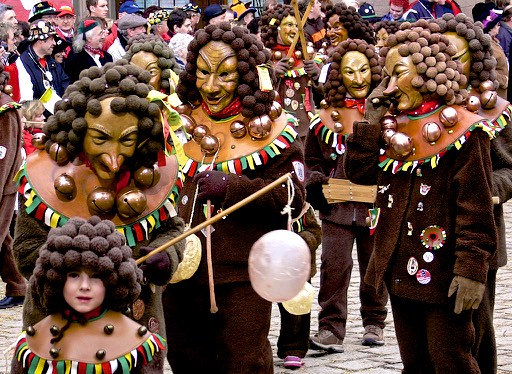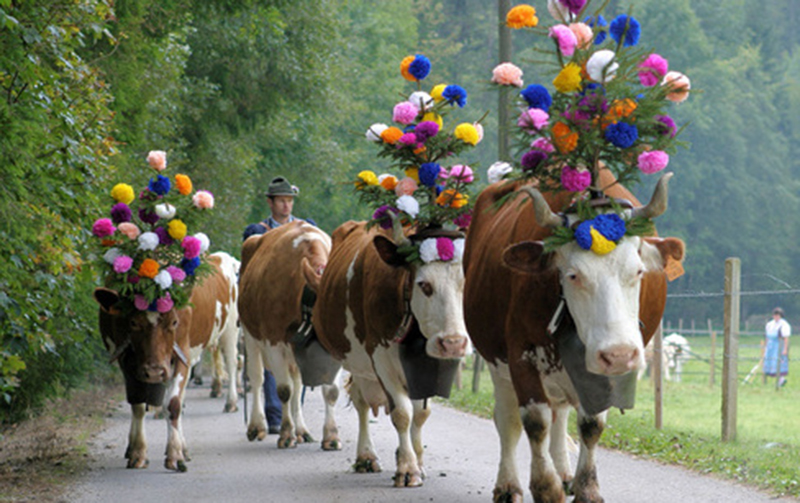We thought we'd give you brief summary about these annual events before you come, they are very unique celebrations that you won't find in many (if any) travel agents glossy brochures, Atelier Swiss always likes to integrate our guests into the community for an unforgettable experience if they wish.
Each different region of Switzerland has a different tradition, or variations of the same theme. Some (as listed) are special to that region only. Here are a few (there are more but less known in smaller villages across Switzerland).

Fastnacht (February/March) Traditional Fasnacht celebrations in Switzerland are a lively affair. Switzerland boasts more than two hundred Fasnacht celebrations, which is nearly unparalleled worldwide. Fasnacht is about partying one more time before Lent, putting an end to winter, driving away evil spirits…. Fasnacht traditions vary from region to region reflecting Switzerland’s federalist system. Fasnacht celebrations in Basel and Lucerne are the largest and most well-known.

Alpabzug (Spring) In the spring, when the snowmelt is finished, villages send the cows with the cowherds to high alpine meadows to graze during the summer months. The event, called Alpaufzug, is celebrated in each village with a procession through the village into the high pastures. The cows are decorated with floral wreaths woven through the horns, and the best milk-producing cow in the village leads the procession wearing the largest bell.
The bells are made in various sizes, and cows are awarded bells according the milk production of the year. In the cantons of Appenzell in eastern Switzerland and also in the Alpine canton of Valais, there are picturesque festivals, with herders and their families dressing in traditional costume (the Appenzell men wear red vests and yellow knicker-type pants) with everyone enjoying the cattle show.
Alpaufzug (Autumn) In August and September, bringing the herds back down to the valleys, known as Alpabfahrten, also prompts festivals, and the cow that has been the greatest milk producer is feted and decked with flowers.
Alplerchilbi, Stans, NW (October) The festival in Stans, the chief town of canton Nidwalden, is called the Aelperchilbi, and is organised by the Aelper fraternity, originally a body of farmers who pastured their flocks in the mountains in the summer, but few of whose members now work on the land.
Celebrations start in the church, piled high with fruit, vegetables and huge mountain cheeses, and continue through the day. After the service everyone is offered an apéritif on the town square. Wild men and women, the butzi, dressed in skins and moss and armed with small trees attached to long poles, chase the children, and throw them sweets. Later comes the parade of floats where themes of local life are displayed.
Trychle (December) St Nicholas comes, accompanied by young torchbearers, and a brass band playing a triad and the sombre notes are soon drowned out by the furious ringing of cowbells. The "Trichler" (bell ringers) come in unending waves. About 1,000 men take part in this deafening march, with a smaller group at the rear blowing cow horns. It's a cross between a Christian celebration and a pagan rite with a peaceful quality, which is the Christian aspect, while the noisy part is a reminder of the festival's pagan roots.
There are countless traditions across the Swiss Alps with pre-Christian origins. Many, like Klausjagen, incorporate cowbell ringing as an essential feature. Noise was intended to chase away evil winter spirits. When Christianity took hold, some of the customs were adapted, and in Küssnacht's case, St Nicholas and the Ifuln were introduced.
Atelier Swiss © 2017

